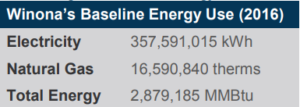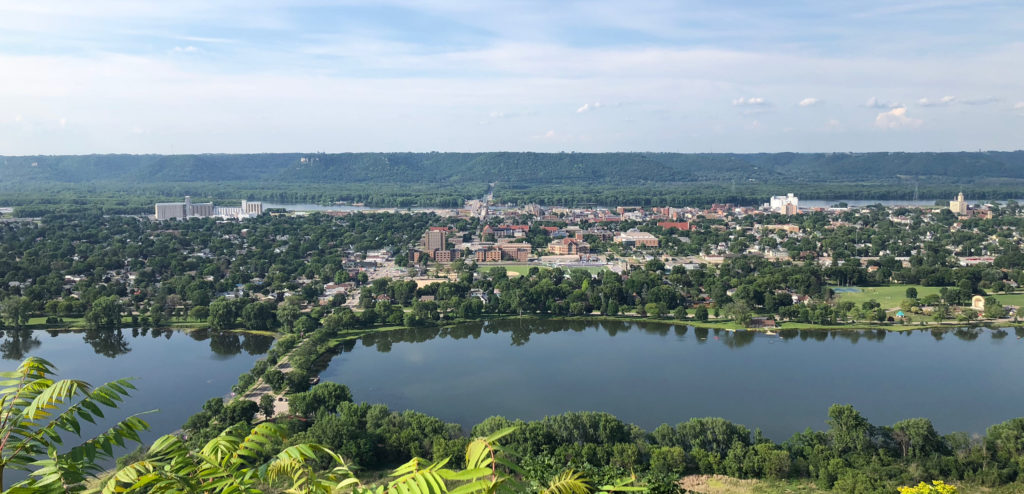Background
In May 2018, more than 40 students from the Winona Senior High School gathered to learn more about their local energy system. The students, all in Pete Weess’ Environmental Science class, had spent the semester studying topics related to the environment (including energy), so they were prepared to dig into the details. After hearing from presenters on the topics of energy efficiency, wind energy, solar energy, and the utility perspective, the students identified their key priorities for the future of Winona County’s energy system. After their deliberations, the students had some lingering questions that went unanswered—so now we’re taking a look at what these young Winona County residents wanted to learn more about.
Questions
- How much of Winona uses clean energy?
- What is Winona doing about renewable energy?
- Why don’t we use more renewable energy sources in more local areas?
- How much of Winona county’s energy come from renewable resources?
- Why is Minnesota not moving as soon as possible to create more wind and solar energy?
Answers
Minnesota has one of the nation’s strongest renewable energy standards, requiring utilities to provide 25 percent of their electrical generation from renewable sources like wind, hydrogen and solar power by the year 2025. In 2015, over 21% of electricity generated in Minnesota came from renewable energy sources, putting us right on track to meet the 2025 renewable energy standards goal.
The City of Winona has not only helped Minnesota get closer to reaching their energy goals, but has also gone above and beyond when the city released their Energy Action Plan late last year. Here is the vision statement from the plan:
“Winona will be a leader in efforts to reduce energy consumption and produce renewable energy, in pursuit of long-term environmental sustainability and reducing our carbon footprint. These efforts will be available to all, will maintain our high quality of life and vibrant economy, and will not limit growth.”
The main goals of the plan are to achieve carbon neutrality by 2050 and reduce energy use by 10 percent over a 2016 baseline by 2025. This is a great first step that will hopefully ultimately lead to an estimated 34 percent reduction in the city’s energy-related greenhouse gas emissions.
But what is Winona’s current energy use? 
In 2016, there were 12,443 distinct Xcel Energy natural gas and electric premises in the city of Winona. A premise is the area served by a single electric or natural gas meter.
Overall, total energy consumption in Winona has been trending downward between 2014 and 2016. While this may be in part due to energy conservation measures, weather-related energy use also plays a part. Both 2015 and 2016 were record-setting warm winters in Minnesota, leading to dramatic decreases in natural gas use for heating purposes.
Two thirds of Winona homes depend on natural gas for heat while fewer than 28 percent of homes are heated using electricity.
The residential sector averaged savings of 0.4 percent of energy use over the past three years. In total, 1,727 residential premises — or about 1 in 6 — participated in Xcel Energy conservation programs between 2014 and 2016.
Winona’s energy efforts have note gone unrecognized. Earlier this year Winona was awarded the 2018 Clean Energy Community Awards coordinated by the Minnesota Department of Commerce and the Clean Energy Resource Teams (CERTs). “Minnesota has ambitious clean energy goals and the objective of our Clean Energy Community Awards is to acknowledge the great work of communities in helping to achieve those goals,” said Commerce Commissioner Jessica Looman.



